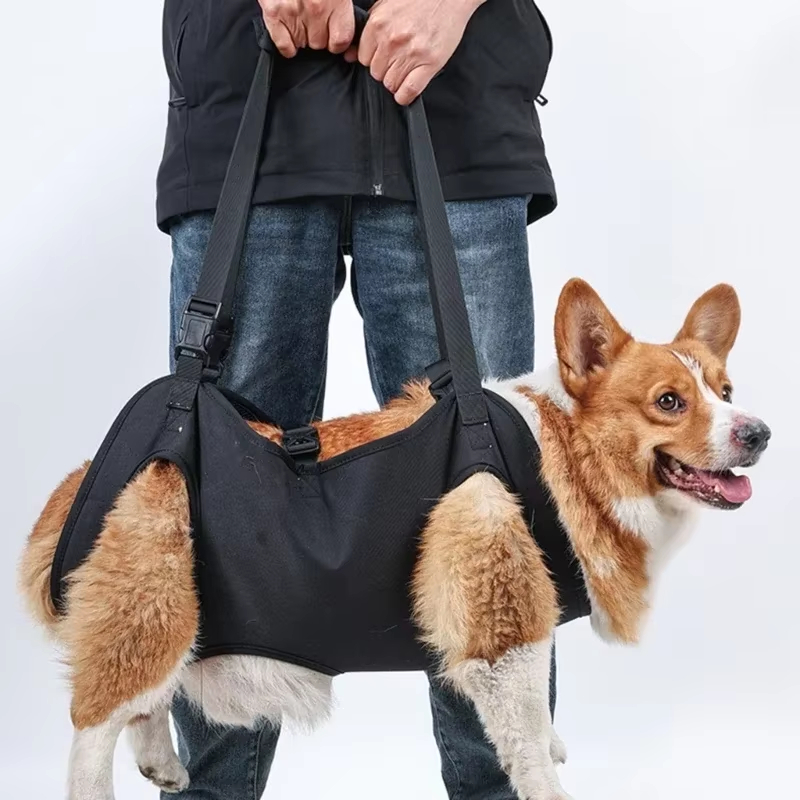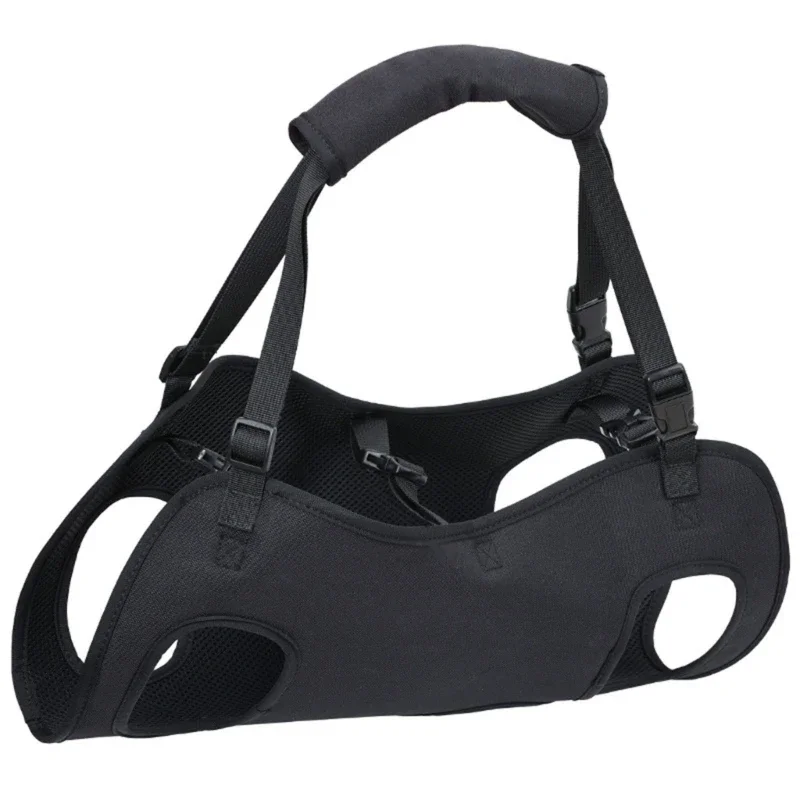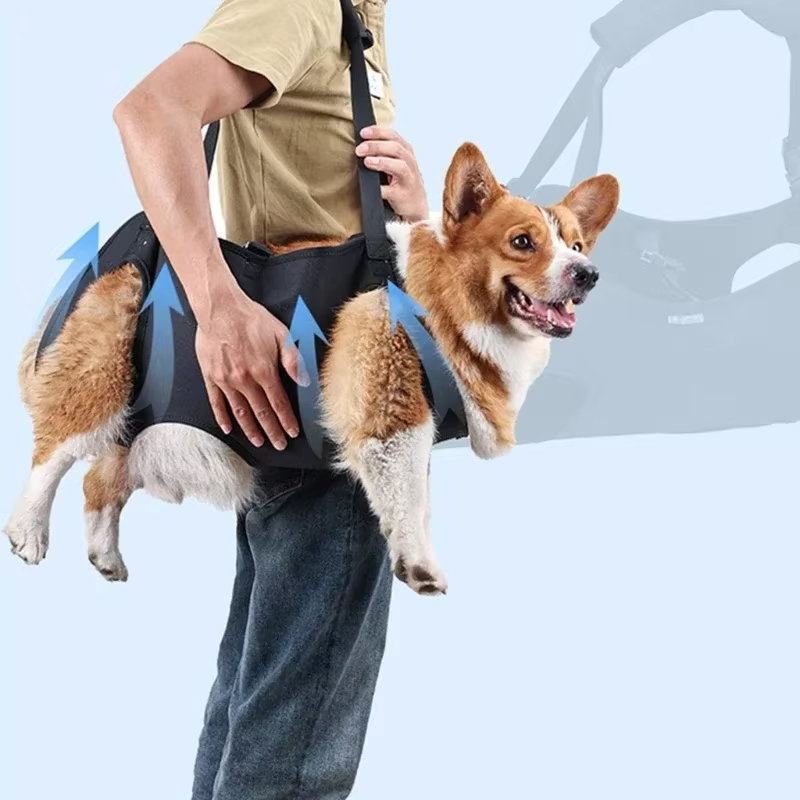Key Features to Look for in a Hiking Dog Harness
When venturing into the great outdoors with your canine companion, choosing the best dog harness for hiking is crucial. It’s not just a matter of comfort, but also of safety and control during your adventure. For the ideal hiking experience, here are several key features to consider in a harness for your dog.

- Adjustability: A perfect fit is essential. Look for harnesses with multiple adjustable straps. This allows for a tailored fit that can accommodate your dog’s unique size and shape.
- Durable Material: The harness should withstand rough terrain and harsh weather. Materials like nylon or polyester with reinforced stitching offer longevity and resilience against the elements.
- Padding: To prevent chafing and ensure your dog’s comfort on long hikes, choose a harness with ample padding, especially around the chest and belly areas.
- Reflective Accents: For safety during low-light conditions, reflective strips or patches on the harness can make your dog more visible to others.
- Handle for Control: A handle on the back of the harness allows you to help your dog over obstacles or restrain them quickly if needed.
- Breathability: A good hiking harness should be made of breathable material to keep your dog cool and prevent overheating during strenuous activity.
- Leash Attachments: Look for harnesses with both back and front leash attachment points. The front attachment can discourage pulling, while the back is ideal for relaxed walking.
By focusing on these features when selecting the best dog harness for hiking, you can improve the hiking experience for both you and your furry friend. Always keep your dog’s needs and comfort in mind as you explore the wide variety of harnesses available.
Top-Rated Dog Harnesses for Hiking
When searching for the best harness for hiking, several top-rated options stand out. Each of these harnesses combines the key features mentioned earlier to ensure a good fit, durability, and comfort for your dog. Here’s a list of harnesses that have gained popularity among hikers for their quality and design:
- Ruffwear Front Range All-Day Adventure Harness: It features four points of adjustability for a snug fit, durable construction, and both front and back leash attachments.
- Kurgo Tru-Fit Smart Harness: This harness boasts five adjustable points, a no-pull front D-ring leash attachment, and includes a carabiner clip for security.
- Puppia Soft Dog Harness: Great for smaller breeds, it offers a soft, breathable air-mesh material and an adjustable chest belt.
- Chai’s Choice 3M Reflective Dog Harness: Designed with reflective material for visibility, it also has a sturdy handle and ergonomic design for comfort.
- Embark Adventure Dog Harness: It features a no-pull front leash attachment and padded, breathable construction. Plus, it has a handle for manual control when needed.
These harnesses not only meet the key feature requirements for hiking but have also gained high ratings from dog owners. When choosing the best dog harness for hiking, consult reviews and consider your dog’s specific needs. Remember, a proper fit is crucial for your dog’s safety and comfort on hikes.
How to Measure Your Dog for the Perfect Harness Fit
Ensuring a perfect fit for your dog’s hiking harness is critical for their comfort and safety. Here’s a simple guide to measuring your dog correctly:
- Measure the Neck: Wrap a tape measure around the base of your dog’s neck. Allow enough space for two fingers between the tape and your dog’s neck to ensure it’s not too tight.
- Measure the Chest: Find the broadest part of your dog’s chest, usually right behind the front legs. Again, ensure you can fit two fingers under the tape measure for a comfortable fit.
- Measure the Length: Measure from the base of the neck to the base of the tail. This helps in assessing the overall harness size and the position of straps.
- Check the Weight: Some harnesses have weight recommendations. This is a good secondary check to ensure you’re looking at the correct size range.
- Consider Growth: If your dog is still growing, choose a harness with more room for adjustment.
- Consult Size Charts: Once you have your dog’s measurements, compare them to the manufacturer’s size chart for the best dog harness for hiking.
- Test for Movement: After fitting the harness, give your dog time to move around. Check for any signs of discomfort or restricted movement.
By taking accurate measurements and paying attention to the fit on your dog, you’ll be more confident in your choice. Remember, different brands may vary in size, so it’s important to refer to each brand’s specific size guide. A well-fitted harness will give your dog the freedom to move while keeping them secure on your hiking adventures.

The Importance of Durability and Comfort
Choosing the best dog harness for hiking lies not only in features but also in durability and comfort. A harness that lasts through countless trails and provides your dog ease is key. Let’s delve into why these two factors are so essential.
Durability Ensures Longevity
Your dog’s harness must endure varied conditions, from rain to rough underbrush. A durable harness is a cost-effective choice, saving you from frequent replacements. Materials like nylon or polyester are strong and can take a beating. Quality buckles and reinforced stitching also add to a harness’s lifespan.
Comfort Keeps Your Dog Happy
A comfortable harness means a happy hiking buddy. It should fit snugly without causing chafing or restricting movement. Padding is vital, especially around the chest and belly. Comfort also comes from a harness that is breathable and won’t overheat your pet.
A hike can be tough on your dog, so the harness you pick must help, not hinder, their adventure. Seek harnesses that score high on both these fronts for a worry-free and pleasant hiking experience. Remember, durability and comfort should go hand-in-hand when selecting the best dog harness for hiking.
Harness Types: Pros and Cons for Hiking
Selecting the best dog harness for hiking requires a look at different types available. Each has its pros and cons, so let’s explore them.
Standard Harnesses
Pros:
- Simple to use and fit
- Offer good control over your dog
- Wide range of sizes and designs
Cons:
- May not have enough padding for long hikes
- Often lack special features for rugged terrain
No-Pull Harnesses
Pros:
- Discourage pulling by redirecting movement
- Good for training dogs to walk calmly
Cons:
- Some dogs may still manage to pull
- Not all designs are sturdy enough for rough hiking
Tactical Harnesses
Pros:
- Made with high durability for tough environments
- Often equipped with handles and attachment points
Cons:
- Can be heavier, which might not suit all dogs
- Usually more expensive due to added features
Step-In Harnesses
Pros:
- Easy for dogs to step into and get fitted
- Typically lighter, they offer good ventilation
Cons:
- Not as secure, might come loose on challenging terrain
- Less control for the owner on difficult trails
Vest Harnesses
Pros:
- Usually feature additional padding for comfort
- May have reflective material for safety
Cons:
- Bulkier, which could overheat some dogs
- Adjustability may be limited compared to other styles
When considering a harness for hiking, weigh each type’s benefits against its drawbacks. Choose one that will provide a balance of comfort, control, and function for both you and your canine companion during your outdoor treks.
Safety Tips for Hiking with Your Dog
When you’re hitting the trails with your four-legged friend, safety is paramount. Eager and energetic, dogs may not always understand the risks that come with rugged terrain and wildlife. Here are some essential safety tips to ensure both you and your dog enjoy a secure hiking experience:
- Keep Your Dog on a Leash: It maintains control and prevents them from straying or disturbing wildlife.
- Bring Plenty of Water: Both you and your dog need to stay hydrated, especially on hot days.
- Check the Weather: Avoid hiking in extreme conditions that could harm your dog.
- Watch for Hazards: Keep an eye out for snakes, sharp rocks, and steep drops.
- First Aid Kit: Carry one that includes supplies for both you and your dog.
- Update ID Tags: Ensure your dog’s tag has your current contact information.
- Start Slow: If new to hiking, gradually build up your dog’s endurance.
- Learn Dog Heimlich: Know how to react if your dog chokes or can’t breathe.
- Beware of Parasites: Use preventative treatments for ticks and fleas.
- Mind the Paws: Check your dog’s paws for cuts or soreness after the hike.
By following these tips, using the best dog harness for hiking, and staying aware of your surroundings, you can make sure that hiking remains a fun adventure for both you and your dog.

Care and Maintenance of Your Dog’s Hiking Harness
Proper care and upkeep will ensure the best dog harness for hiking lasts longer. Follow these tips:
- Clean Regularly: Wipe down the harness after each hike. Use a damp cloth for spot cleaning. Machine wash if needed but check the label first.
- Check for Damage: Before and after hiking, inspect the harness. Look for tear, frays or loose stitches. Repair or replace if you find any issues.
- Dry Properly: Never store the harness wet. Hang it to dry in a ventilated area, away from direct sunlight.
- Store Correctly: Keep the harness in a cool, dry place. Avoid folding it tightly to prevent creases.
- Follow Manufacturer Instructions: Each harness comes with specific care guidelines. Stick to them for the best results.
By staying on top of care and maintenance, your dog’s harness remains safe, comfortable, and reliable on hikes.
Recommended Accessories for Hiking with Dogs
Besides choosing the best dog harness for hiking, it’s wise to consider additional accessories. These items can enhance safety and convenience on your treks.
- Collapsible Water Bowl: Ensures your dog stays hydrated without the bulk.
- Dog Booties: Protects your dog’s paws from rough terrain and hot surfaces.
- ID Tags and Microchips: Provides identification in case your dog gets lost.
- Dog Backpack: Allows your dog to carry its own supplies, like food and waste bags.
- Cooling Vests: They help regulate your dog’s body temperature in warm weather.
- Tick Remover: A must-have to safely remove ticks that latch onto your dog.
- LED Collar Lights: Offers visibility during evening or early morning hikes.
- Portable First Aid Kit: Essential for treating minor injuries on the go.
With the right harness and these supportive accessories, you and your dog can enjoy many safe and memorable hikes together.
